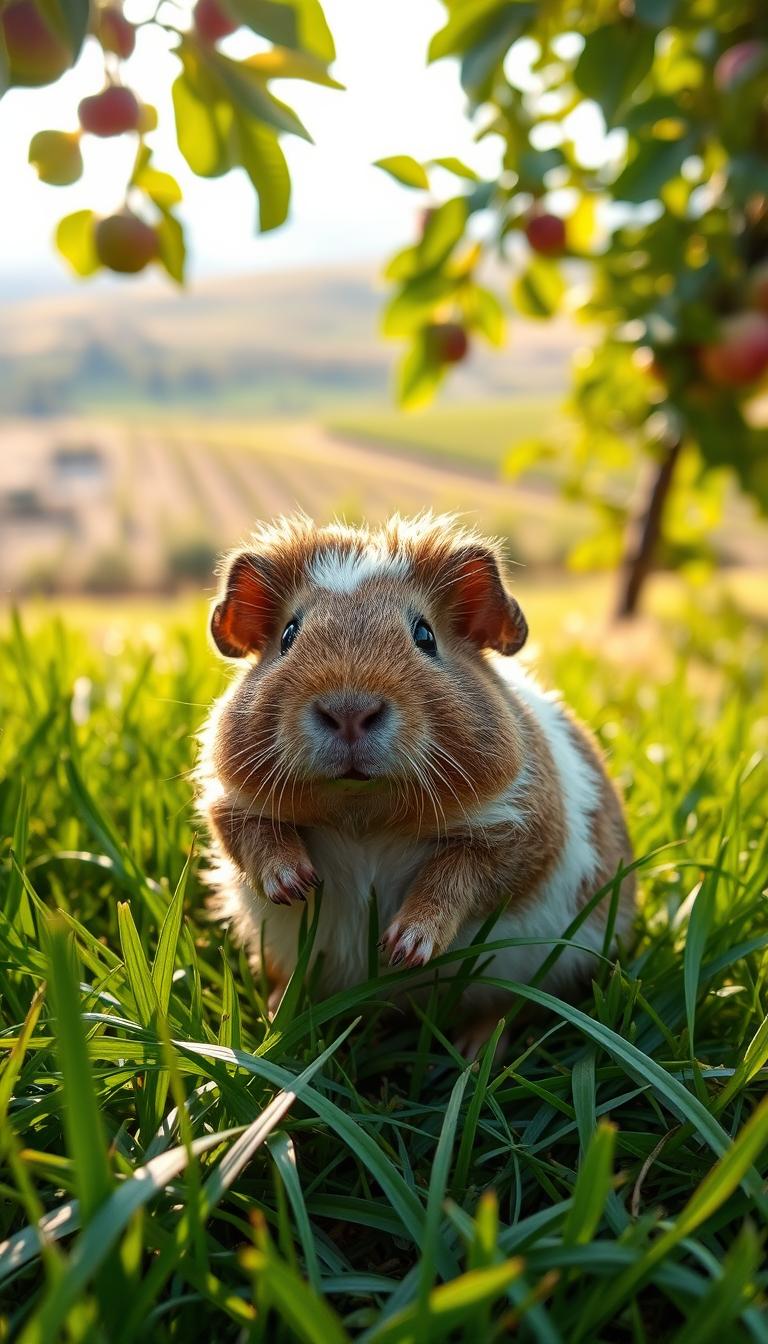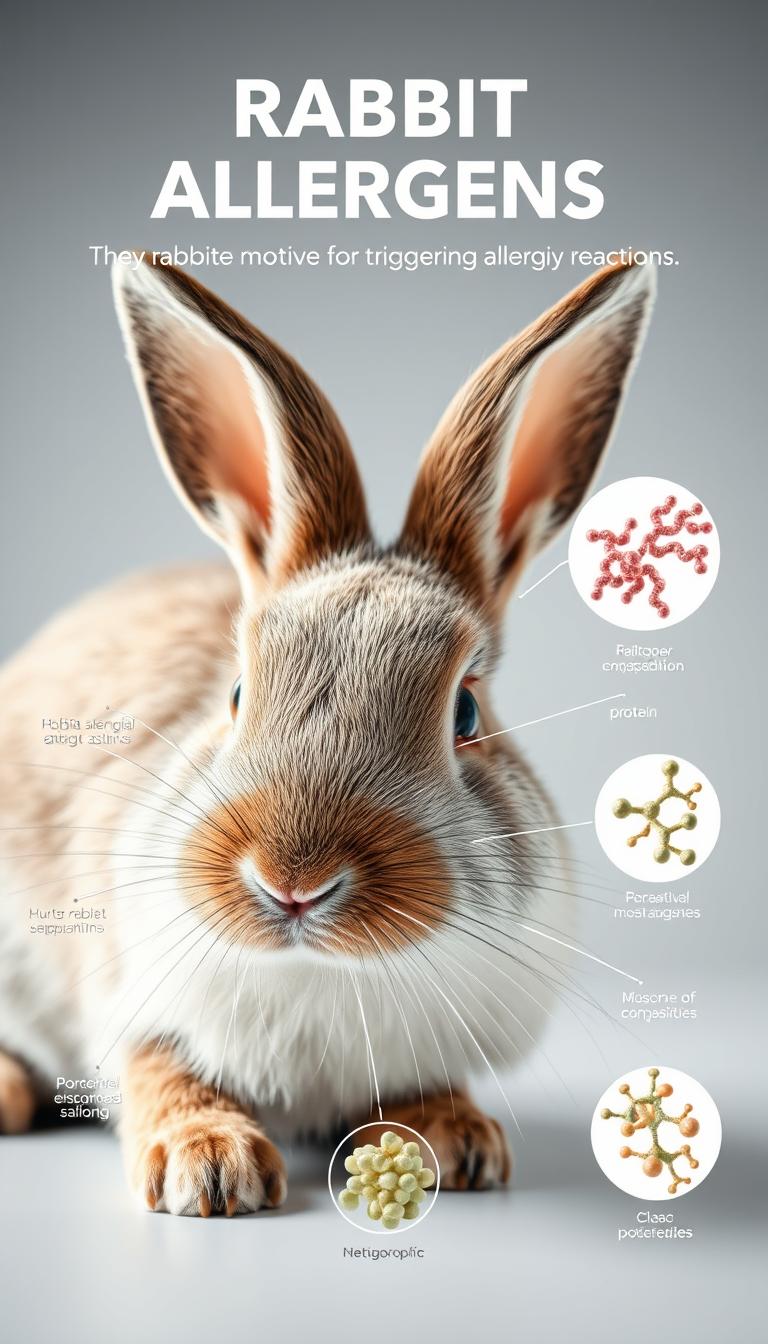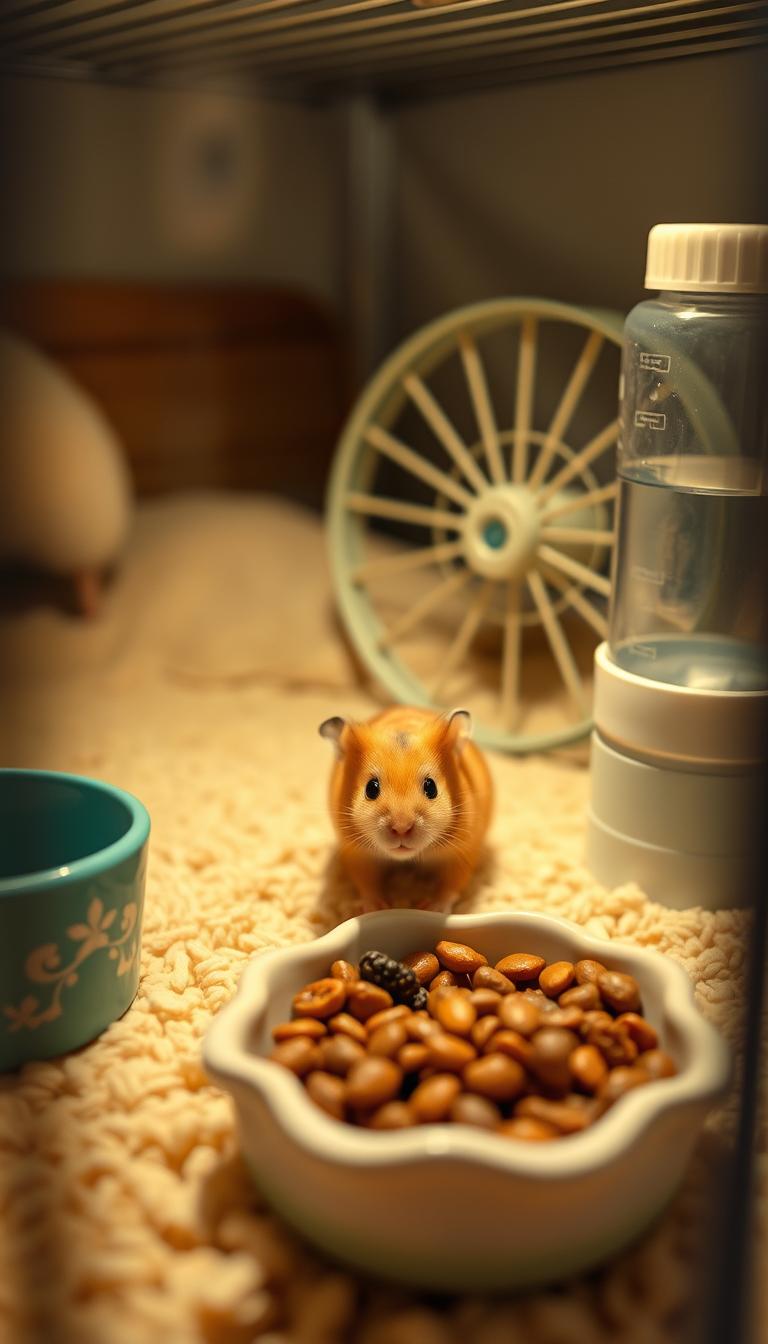Finding the right hay for small pets can feel overwhelming. Many owners wonder if soft-textured options like orchard grass meet their pet’s nutritional needs. Rest assured—this leafy variety offers essential fiber for digestion and dental health benefits, making it a staple worth considering.
What sets this hay apart? Its exceptionally low calcium content (just 0.33%) helps reduce urinary risks compared to other varieties. The tender blades are easier to chew, which explains why selective eaters often favor it over coarser options. You’ll notice many pets use it for both snacking and creating cozy nesting areas.
Nutritionally balanced with 34% crude fiber and 10% protein, it supports daily dietary requirements without overloading sensitive systems. While timothy hay remains popular, some animals leave behind its tougher stems—a problem rarely seen with softer alternatives.
This guide explores how to safely introduce new hays, address common concerns about dietary changes, and compare nutritional profiles. By the end, you’ll feel confident choosing the best option for your pet’s unique preferences and health needs.
Table of Contents
Understanding the Importance of Hay in Your Guinea Pig’s Diet
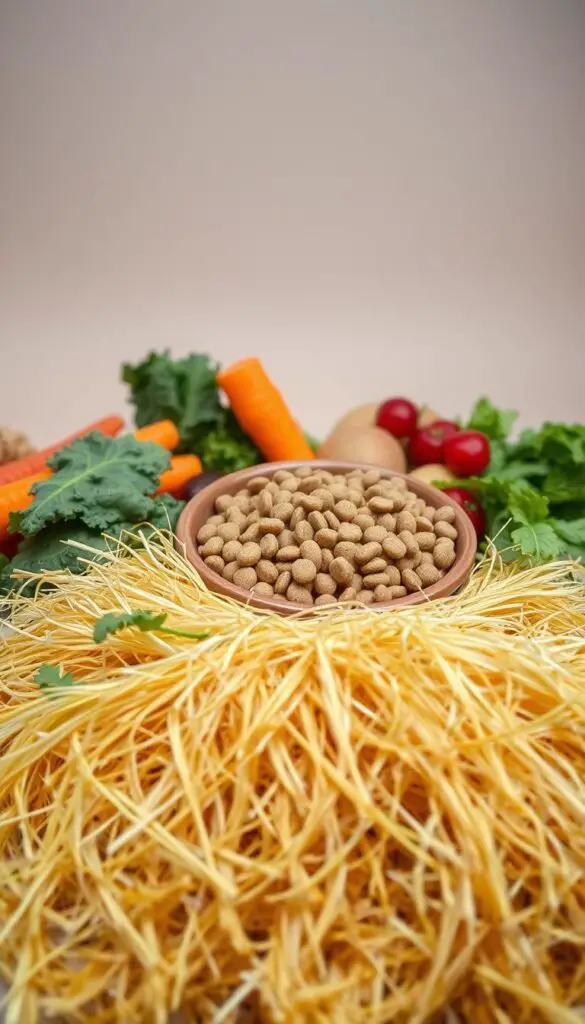
Your furry friend’s well-being starts with what’s in their food bowl. High-quality hay isn’t just a snack—it’s the foundation of their digestive health and natural behaviors. Without it, their unique biology can’t function properly.
Digestion and Fiber Essentials
These small herbivores thrive on fibrous plants. Their digestive systems process hay slowly, requiring constant intake to keep everything moving. You might be surprised to learn 80-90% of their daily calories should come from hay alone.
Low-fiber diets risk dangerous slowdowns called GI stasis. This condition can become life-threatening within hours. Fresh hay provides the roughage needed to maintain healthy gut motility and nutrient absorption.
Dental Health and Continuous Chewing
Those adorable chompers never stop growing. Regular hay chewing wears down teeth naturally, preventing painful overgrowth. Without this abrasive action, misaligned molars can trap tongues or make eating impossible.
Hay’s texture also stimulates saliva production, which aids digestion. Pairing it with safe vegetables creates a balanced diet. Always ensure unlimited access—your pet knows instinctively how much they need.
Exploring Different Hay Types for Your Guinea Pig
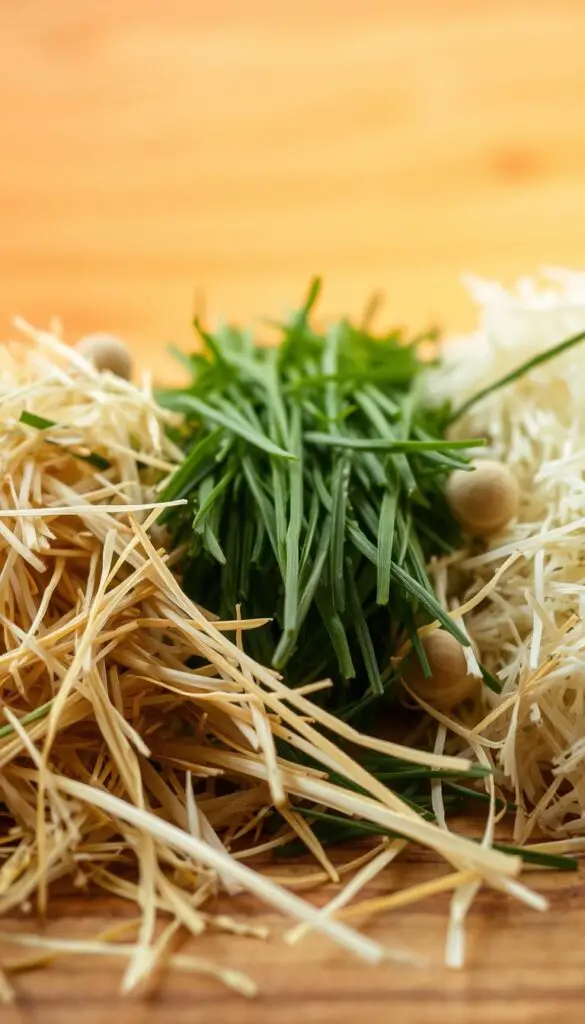
Selecting the ideal hay variety ensures your pet gets both nutrition and enjoyment. Three primary options dominate small pet care: timothy, orchard, and alfalfa. Each serves distinct purposes based on age, health needs, and taste preferences.
Timothy, Orchard, and Alfalfa Overview
Timothy hay remains the top choice for adult pets due to its balanced stem-to-leaf ratio. Its coarse texture supports dental wear while providing 34% crude fiber. Many owners notice their furry companions actively hunt for its sweet seed heads.
Orchard grass offers a softer alternative with similar nutritional value. Its leafy composition often appeals to selective eaters who avoid tougher stems. Both grass hays can be freely offered without weight concerns.
Alfalfa stands apart as a protein-rich legume hay. Best suited for growing babies and nursing mothers, its higher calcium content supports bone development. Transition to grass varieties after six months to prevent urinary issues.
Comparing Grass Versus Legume Hays
Grass types like timothy and orchard contain fewer calories than legume options. This makes them ideal for daily feeding. Alfalfa’s dense nutrient profile benefits specific life stages but risks obesity in mature pets if overused.
Insights from Pet Parent Experiences
Seasoned owners recommend rotating grass hays to maintain interest. One Reddit user shared: “Mixing timothy with orchard stopped my pair from wasting half their hay.” Texture preferences vary widely—some pets burrow into fluffy piles while others nibble methodically.
Observing your companion’s habits helps tailor their diet. Offer samples of different types to discover favorites. Remember: fresh, fragrant hay encourages consistent munching for optimal health.
Can Guinea Pigs Eat Orchard Grass?
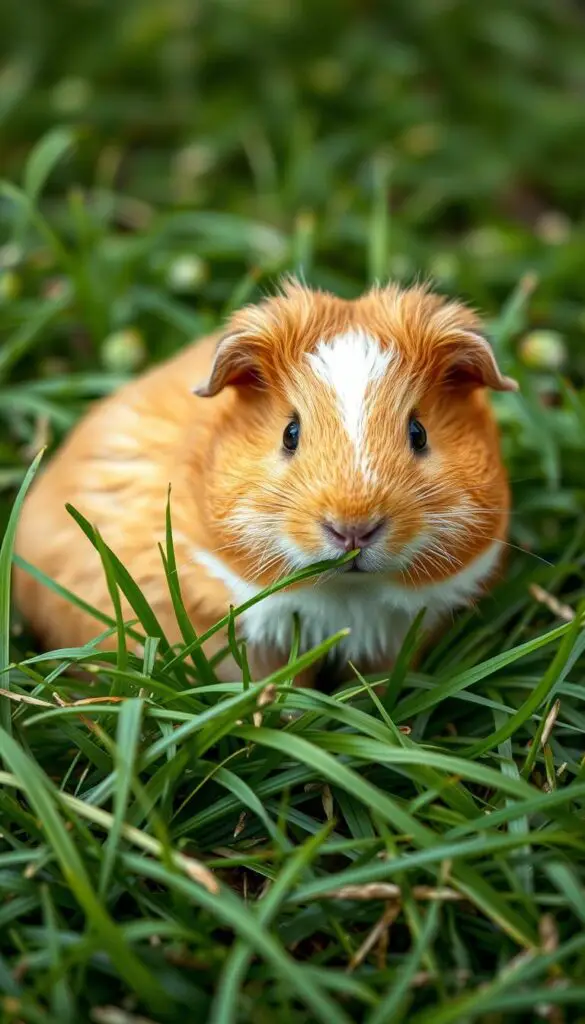
Choosing the perfect hay involves balancing nutrition with your pet’s preferences. This leafy variety stands out for its versatility and gentle composition, making it a crowd-pleaser for both eating and nesting activities.
Texture, Taste, and Safety Considerations
Soft blades with a natural sweetness make this hay ideal for selective nibblers. Unlike coarser options, its flexible stems reduce eye irritation risks while maintaining essential fiber intake. Pets often burrow into its fluffy piles, turning mealtime into a cozy experience.
Owners report higher consumption rates with this variety. “My picky eater finally cleans his bowl since switching,” shares a forum user. The mild aroma appeals to sensitive noses, encouraging consistent munching throughout the day.
Mixing Orchard Grass with Other Hay Varieties
Combine different hays to create sensory excitement. Start with a 25% orchard grass blend, gradually increasing based on your pet’s response. This method prevents digestive issues while introducing new textures.
| Hay Type | Texture | Stem Flexibility | Calcium Content |
|---|---|---|---|
| Orchard Grass | Soft, leafy | High | 0.33% |
| Timothy | Coarse, stemmy | Medium | 0.43% |
Rotate between two grass hays weekly to maintain interest. Store mixes in airtight containers to preserve freshness and crunchiness. Observe which combinations your companion gravitates toward during feeding times.
Nutritional Benefits of Orchard Grass for Your Guinea Pig
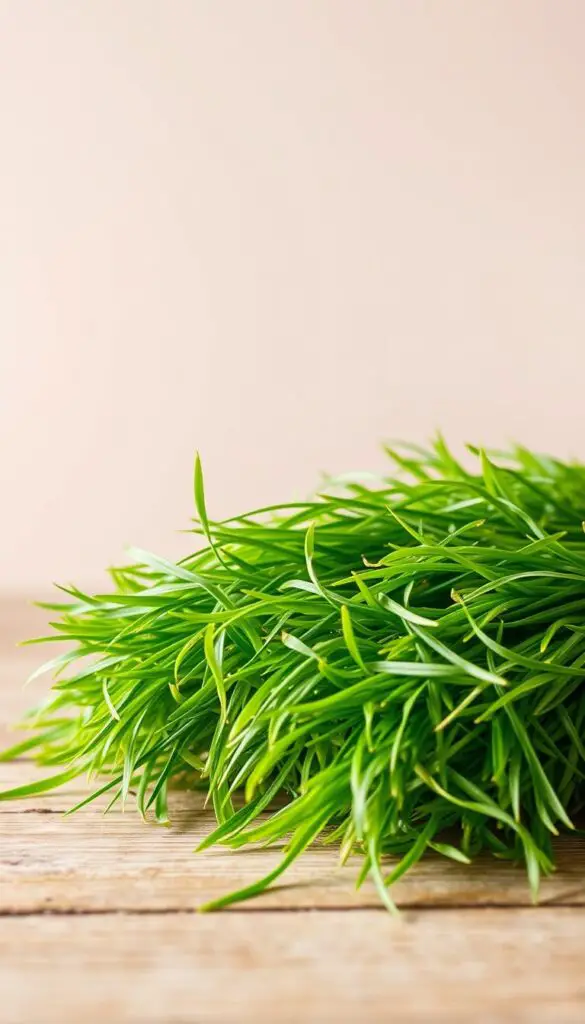
Optimal nutrition forms the cornerstone of small pet care. With 34% crude fiber and a calcium level 30% lower than timothy hay, this hay variety supports lifelong wellness through balanced nourishment. Its unique composition addresses common health concerns while keeping meals enjoyable.
Balanced Minerals for Urinary Health
The standout feature? A 0.33% calcium content that actively prevents bladder stones—a frequent issue in mature pets. While other hays risk mineral buildup, this option maintains safe levels without compromising bone strength. Veterinarians often recommend it for animals with sensitive urinary systems.
Fiber-rich blades promote constant digestion, reducing risks of dangerous blockages. Your companion’s gut stays active, processing nutrients efficiently between meals. Combined with 10% protein, it fuels energy needs without overworking delicate kidneys.
Owners notice improved coat quality and stable weight when using this hay long-term. One exotic pet specialist notes: “It’s become my top suggestion for adults needing sustained nutrition without excess calories.” Rotate it with other grass varieties to maintain dental wear while maximizing health benefits.
Incorporating Variety in Your Guinea Pig’s Diet

Spicing up meals isn’t just for humans—it’s vital for small herbivores too! A dynamic feeding routine prevents fussy habits while supporting natural curiosity. Let’s explore how smart rotations can transform mealtime into an adventure.
Why Routine Changes Matter
Just like people, pets thrive when their environment offers new experiences. Switching between timothy, meadow hay, and other grass types weekly keeps nibbling sessions engaging. This approach reduces wasted food and encourages consistent fiber intake.
Start by blending 30% new hay with familiar favorites. Watch how your companion sniffs and explores the mix—their initial hesitation mirrors wild instincts to assess safety. Gradual introductions build trust in dietary changes.
Smart Rotation Strategies
Create a weekly schedule alternating three grass varieties. Pair leafy orchard hay with stemmy timothy for texture contrast. Add botanical hay blends occasionally for aromatic surprises. Store each type separately to maintain freshness and crunch.
One owner noted: “My pair now popcorn around their hay rack when they smell fresh oat hay!” Combine these rotations with best fruits for guinea pigs for balanced nutrition and taste exploration.
Enrichment Through Exploration
Different hay textures stimulate natural foraging behaviors. Scatter loose strands in hiding spots or stuff toilet paper rolls for edible puzzles. You’ll notice increased activity as your pets investigate crinkly leaves versus soft blades.
Variety doesn’t mean constant change—stick to a predictable pattern that feels safe yet novel. This balance supports both mental wellness and digestive health, creating happy eaters ready to try vet-recommended foods when needed.
Tips for Choosing High-Quality Hay
Selecting premium hay ensures your pet thrives with every nibble. Fresh, nutrient-rich varieties provide essential fiber while supporting natural chewing behaviors. Let’s explore how to spot superior options and keep them at peak freshness.
Spotting Top-Tier Hay
Vibrant green color signals optimal nutritional value, except for golden meadow varieties. Crinkle a handful—good hay springs back softly without crumbling. Musty odors or grayish tints mean it’s past its prime.
A sweet grassy scent makes small pets dive in eagerly. Dust clouds during handling? Toss it—your fuzzy friend’s lungs deserve better. Always check for stray twigs or plastic bits before serving.
Storage Solutions That Work
Keep your supply in breathable bins away from sunlight. Basements or pantries work great—just avoid damp areas. Properly stored hay stays fragrant for months, locking in vital nutrients.
Rotate older stock to the front like grocery stores do. If you spot moisture, spread hay on newspaper overnight. This simple trick prevents mold while maintaining crunch appeal!

